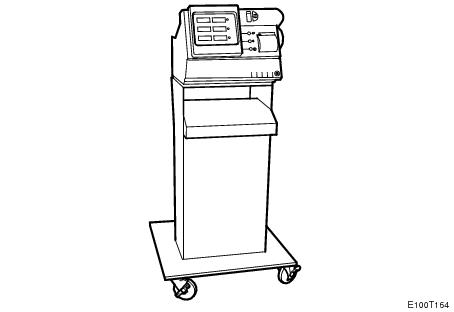Exhaust gas analyser
| Exhaust gas analyser |
The exhaust gas analyser must be able to take CO, CO 2 , HC and O 2 readings in a quick and accurate manner.

| Location in workshop |
The scope and size of the workshop should be taken into consideration when determining equipment location. In a large workshop with several mechanics, a ceiling rail that can handle main different instruments is the best choice. In a small workshop with fewer mechanics, placing the equipment on a cart may be sufficient, although use of a ceiling rail is always preferred as it frees up floor space. Make sure that the hoses are no longer than 5 metres.
| Technical performance |
| • |
The gauge should fulfil the requirements of OIML-1, which corresponds to a CO measurement resolution of at least 0.02% and an HC measurement resolution of at least 1 ppm. Any national requirements must also be heeded.
|
|
| • |
The gauge must also have clearly marked controls and a display or monitor with large and clear digits/text that can also be read in sunlight.
|
|
| • |
Automatic condensation separator with fine filter.
|
|
| • |
Strive to purchase instruments with a short warm-up period. It is advantageous if the instrument has a standby mode, which shortens the start time. Response time should not exceed 10 s.
|
|
| • |
There should be a flow indicator.
|
|
| • |
Calibration with reference gas via automatic system
|
|
| • |
The instrument must have a fixed service interval as well as maintenance and user instructions. Good access to service in the local market is also required.
|
|
Compare with the following equipment:
| • |
Sun MGA 1500
|
|
| • |
Bosch
Internet address: www.bosch.com |
|
| • |
TecnoTest 488
Internet address: www.tecnotest.com |
|
| • |
Opus 40
Internet address: www.opus.se |
|



